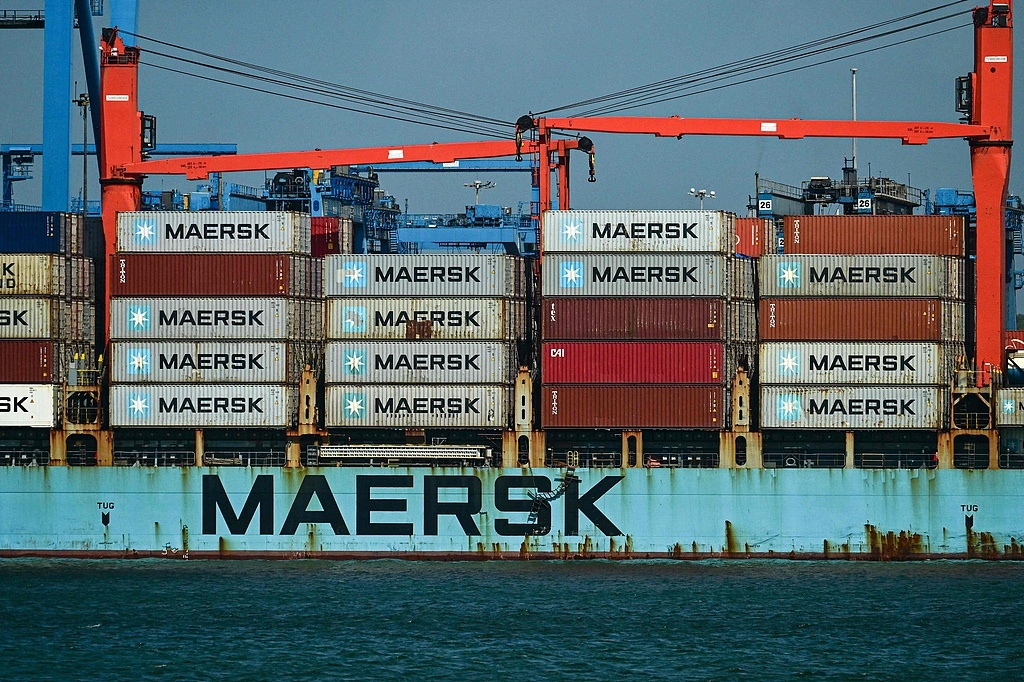
In 2025, when the global trade landscape is experiencing severe fluctuations due to the US tariff policy, a trade route reconstruction led by shipping giants is accelerating among the continents of Asia, Africa and Latin America. When the United States brandischarges the "tariff stick" at its major global trading partners, international shipping giants such as Maersk of Denmark and Mediterranean Shipping Company of Switzerland have all changed their course and shifted their strategic focus to emerging markets, demonstrating the business wisdom of "if the east is not bright, the west will be bright" through their actions.
The North American predicament under the tariff storm
The chain reaction triggered by the US tariff policy first emerged on the North American shipping routes. Since the United States announced in April 2025 that it would impose a 34% "equivalent tariff" on Chinese goods exported to the US, the North American container market has been plunged into unprecedented turmoil. Data shows that the average spot freight rate for containers from Asia to the west coast of the United States has plummeted from $6,100 per FEU to $1,823 per FEU, a decline of 58%. The freight rate on the East Coast route also dropped by 46%. Behind this cliff-like decline lies the double squeeze of overcapacity and shrinking demand. Maersk's financial report shows that in the second quarter of 2025, its container throughput between China and the United States decreased by 35% year-on-year, and the throughput at US ports in June dropped by 8.4% year-on-year. What is even more worrying is that the National Retail Federation of the United States predicts that the import volume of major container ports in the United States will decline by 5.6% in 2025 compared to 2024, and the North American market seems to have fallen into a "winter".
The strategic rise of emerging markets
While the North American market is in a cold spell, the Asian, African and Latin American regions present a completely different picture. Mediterranean Shipping Company announced that it will launch two brand-new routes in September 2025: one connecting China, South Korea and Peru, and the other linking China, Singapore with West African ports such as Nigeria, Benin and Angola. The opening of these two routes marks that shipping giants have officially shifted their strategic focus to emerging markets. Maersk has opened a 20,000-square-meter logistics center in Panama as a "gateway to Latin America", operating multiple sea routes every week. Behind these layouts lies the rapid growth of trade volume between Asia and Africa as well as Latin America. Data shows that in the first half of 2025, China's imports and exports with Africa reached 1.18 trillion yuan, an increase of 14.4%. Imports and exports with Central Asia reached 357.2 billion yuan, increasing by 13.8%. Emerging markets are becoming new growth poles for global trade.
The dynamic mechanism of route reconstruction
Behind this reconstruction lies the result of the interweaving of multiple forces. First of all, it is an inevitable choice for industrial transfer. The US tariff policy has accelerated the regionalization and reconstruction of the global industrial chain. When the United States imposed a 100% tariff on electric vehicles, BYD chose to build the world's largest lithium iron phosphate battery factory in Brazil. While the Samsung base in Vietnam was shifting its production capacity due to tariffs, the Noida factory in India was in trouble because of market access restrictions. This industrial competition has forced shipping enterprises to reallocate resources and direct their capacity towards emerging markets with greater potential.
The second is the breakthrough progress in infrastructure. The cross-border data channel of the China-Laos Railway has enabled the "three documents matching" of customs, logistics and payment information, reducing the customs clearance time to 71 minutes. The digital bill of lading system in Qianhai, Shenzhen, has increased the efficiency of trade financing by 340% through blockchain evidence storage. These innovations are reshaping the "digital infrastructure" of global trade, providing strong support for shipping enterprises to layout emerging markets.
In addition, structural changes in the consumer market are also an important factor. Among Africa's 1.19 billion population, those under the age of 65 account for 96.9%, with an average age of only 17.7. Although the Latin American market is lacking a middle class, the penetration rate of smart phones has exceeded 65%. These data reveal the huge potential for consumption upgrade in emerging markets, attracting shipping giants to accelerate their layout.
The Role and Contribution of Chinese ports
In this reconfiguration of trade routes, Chinese ports play a key role. Since 2025, Shanghai Port has added 12 international routes, Yantian Port Area of Shenzhen Port has added 11 new routes, and Guangzhou Port has net added 7 foreign trade routes. These newly added routes mainly point to emerging regions such as Latin America, Africa and Southeast Asia. Dalian Port has launched roll-on/roll-off routes to South Africa and Mexico. Qingdao Port has added 11 new container routes to South America and the Middle East. Rizhao Port has opened a direct bulk and general cargo route to Lagos Port on the west coast of Africa. The opening of these routes not only promotes trade exchanges between China and emerging markets, but also provides significant support for the transformation of the global shipping industry.
Data shows that in the first half of 2025, China's imports and exports with over 190 countries and regions increased. Among them, the growth rate of imports and exports with Africa reached 14.4%, and that with Central Asia reached 13.8%. Data released by China's Ministry of Transport shows that in the first half of 2025, the container throughput of routes to countries along the Belt and Road Initiative reached 34.28 million TEUs, with a year-on-year growth rate of 23.7%, becoming the main driving force for the growth of foreign trade containers.
A new voyage where challenges and opportunities coexist
The strategic transformation of shipping giants is by no means an easy path. The average age of the aircraft fleet in Africa is 25 years, the 37% turnover rate of skilled workers in the Latin American market, and the risk of geopolitical conflicts in the Middle East are all obstacles that must be overcome. However, the opportunities are equally significant: the strong growth of China's imports and exports with Africa, the rise of alternative routes such as the China-Europe Railway Express, and the application of digital platforms accelerating industry transparency all provide new development opportunities for shipping enterprises. Maersk has raised its EBITDA for 2025 to between $8 billion and $9.5 billion, higher than previously expected, thanks to the strong growth in demand from emerging markets.
When the tariff storm sweeps across North America, the trade routes among Asia, Africa and Latin America are regaining new vitality. This strategic breakthrough led by shipping giants not only concerns the survival of enterprises but also heralds the birth of a new global trade order. In this transformation, Chinese ports and shipping enterprises are moving forward hand in hand, jointly writing a new chapter in global trade.

The global electric vehicle market in 2025 is experiencing intense turbulence. Tesla, once a disruptor that reshaped the industry landscape, is now mired in an unprecedented sales crisis.
The global electric vehicle market in 2025 is experiencing …
Recently, Chinese telecom companies Huawei and ZTE signed a…
Recently, according to Xinhua News Agency, Israel's air str…
A strongly worded report from the Equality Trust argues tha…
On November 27, 2025, Alibaba officially entered the global…
The focus of the global financial market in 2025 has always…